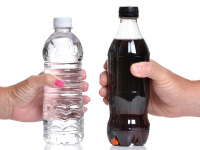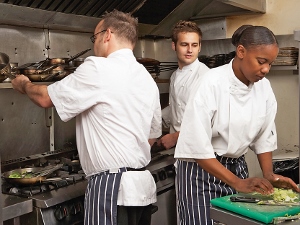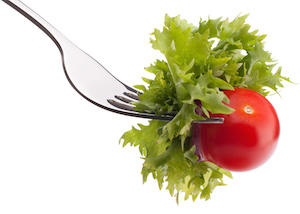
Mini bar trends to boost your business
Investing in the latest mini bar technology and trends can reduce your servicing costs, aid convenience, boost energy efficiency and cost-effectiveness.
But what is this new technology, and how can changing your approach to mini bars boost your property’s profits?
Most hotels and resorts these days will have mini bars in each room. They have become standard practice for luxury accommodations and a huge selling point for budget guest rooms. However the latest trend is to take this asset up a notch. From the style and innovation of the refrigerator itself, to the quality of its convenient contents, the trick is in finding ways to make your mini bar more appealing to your guests.
One interesting way hotels have begun to do this is by making the selection of items from the mini bar an exciting activity for guests. For instance, some hotels in the United States have started to implement pairing menus. These menus are placed near the mini bar, to make suggestions as to what snacks and beverages best go together. For instance, the menu might suggest pairing the cherry liqueur and coco-cola with the luxury dark chocolate truffles; or else the red wine with the aged cheddar. This approach worked wonders for Portland, Oregon’s Hotel deLuxe. The more interesting the combinations, the more willing the guest will be to purchase the items from the mini bar menu.
There are also innovative ways that you can stock your mini bars to entice more purchases. The XV Beacon in Boston recently stocked their’s with, among other things, a homeopathic oral spray called the Life Detoxer from Sprayology. This product is designed to lessen the effects of jet lag, and it’s benefits have become legendary in Boston since it was first offered to guests there. The liquid spray is said to ease breathing, improve liver toxicity and reduce sluggishness. The Little Nell hotel in Aspen offers a can of truO² in their mini bar, which contains 95% pure oxygen and is said to rejuvenate and relax its consumer.
These types of products that aim to assist with jet lag are often things that guests desire when they first arrive at a hotel, but do not wish to go out and buy. Having them in the mini bar bridges this gap in the market.
The best thing, according to senior vice president of the Food and Beverage and Brand Standards at Omni, Stephen Rosenstock, is to vary the contents of your mini bar with both luxury and pedestrian brands. “You can have all the fancy chocolate you want, but people still want their M&Ms,” he insists.
The Wall St Journal recently reported that many hotels are seeing tepid sales of their current mini bar offerings and need to shake up their contents. The biggest selling mini bar beverage is still bottled water, followed by Diet Coke and the biggest selling snack is Pringles so even though luxury items might give your mini bar more initial appeal, the more popular products are likely to bring in more money.
The trick of course is not to stock too much of one thing as the last thing anybody wants is multiple cases of expired produce. So, mini bars do not need to be very big.
If you are looking to install some in your rooms, or are considering a refurbishment; make sure you think about the spacing of each individual room.
The mini bar should be located somewhere the guest will notice it straight away – so do not install one next to the bed where it will go unnoticed – and it also needs to be unobtrusive. It should feature in the room without overwhelming the room.
Other ways hotels have begun trying to entice more mini bar customers, is through the use of aesthetics and new technology.
Companies in the United States are now offering mini bars that confer with in-room entertainment systems.
For instance, hotels would be able to offer guests a “movie night” deal where they could order an on-demand movie and selection of mini bar drinks/snacks at a special price.
The mini bar is often an accommodation manager’s afterthought that is then ignored by most guests, but approaching the mini bar with some creativity will allow you to tap into a profitable new realm of impulse buys.
There are two different types of mini bars that are generally installed in accommodation properties. The first choice, due to its absolute silent operation, is an ‘absorption’ model. The absorption mini bar has no moving parts therefore requiring little maintenance. The second option is a ‘compressor’ model.
The compressor models provide reliable cooling even at high ambient temperatures. They are economical in terms of power consumption and with a top quality model, produce only a minimal amount of noise.
Historically, the absorption mini bar has always been more popular amongst managers because it is much quieter.
It generates a cooling cycle known as absorption technology that uses heat to change the gas back into liquid and so does not require moving parts.
However, when installing an absorption mini bar, having the correct sufficient ventilation is essential for the proper cooling performance.
They cool on an average of 5 degress celcius in an ambient room temperature of 25 degress celcius.
Compressor models, even though they generate a little noise, are becoming increasingly popular due to their low energy consumption.
In comparison with the absorption model they use up to 70% less energy. Mini bar contents are an accommodation staple, but guests expect them to be overpriced and bland.
If you can tap into some new trends to make your mini bars stand out, you will be opening up your business to reap all kinds of financial benefit.

AccomNews is not affiliated with any government agency, body or political party. We are an independently owned, family-operated magazine.






